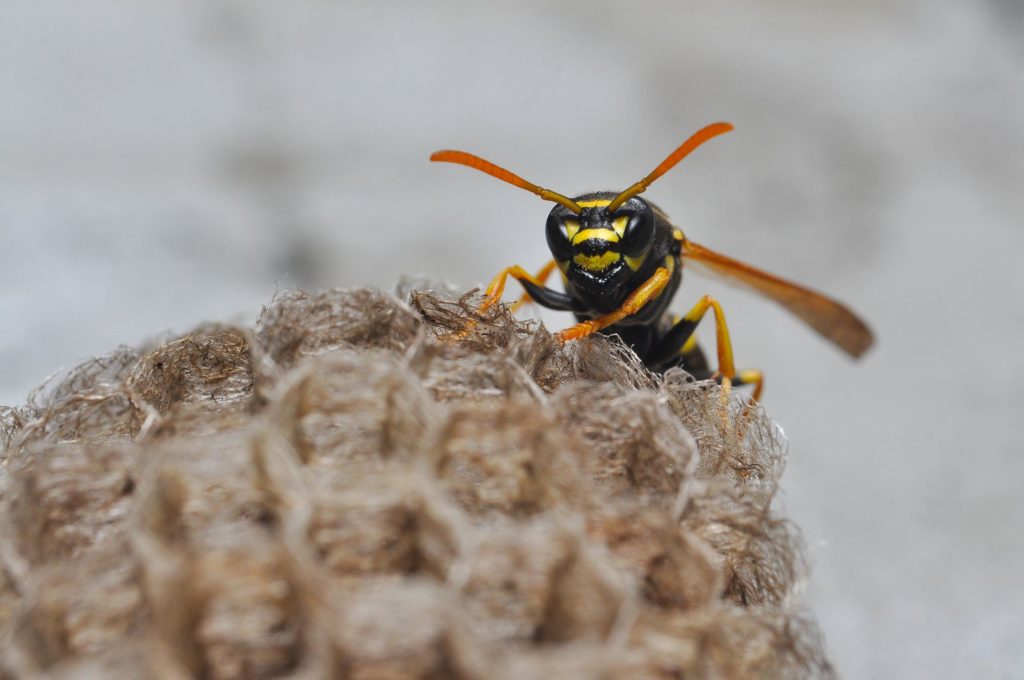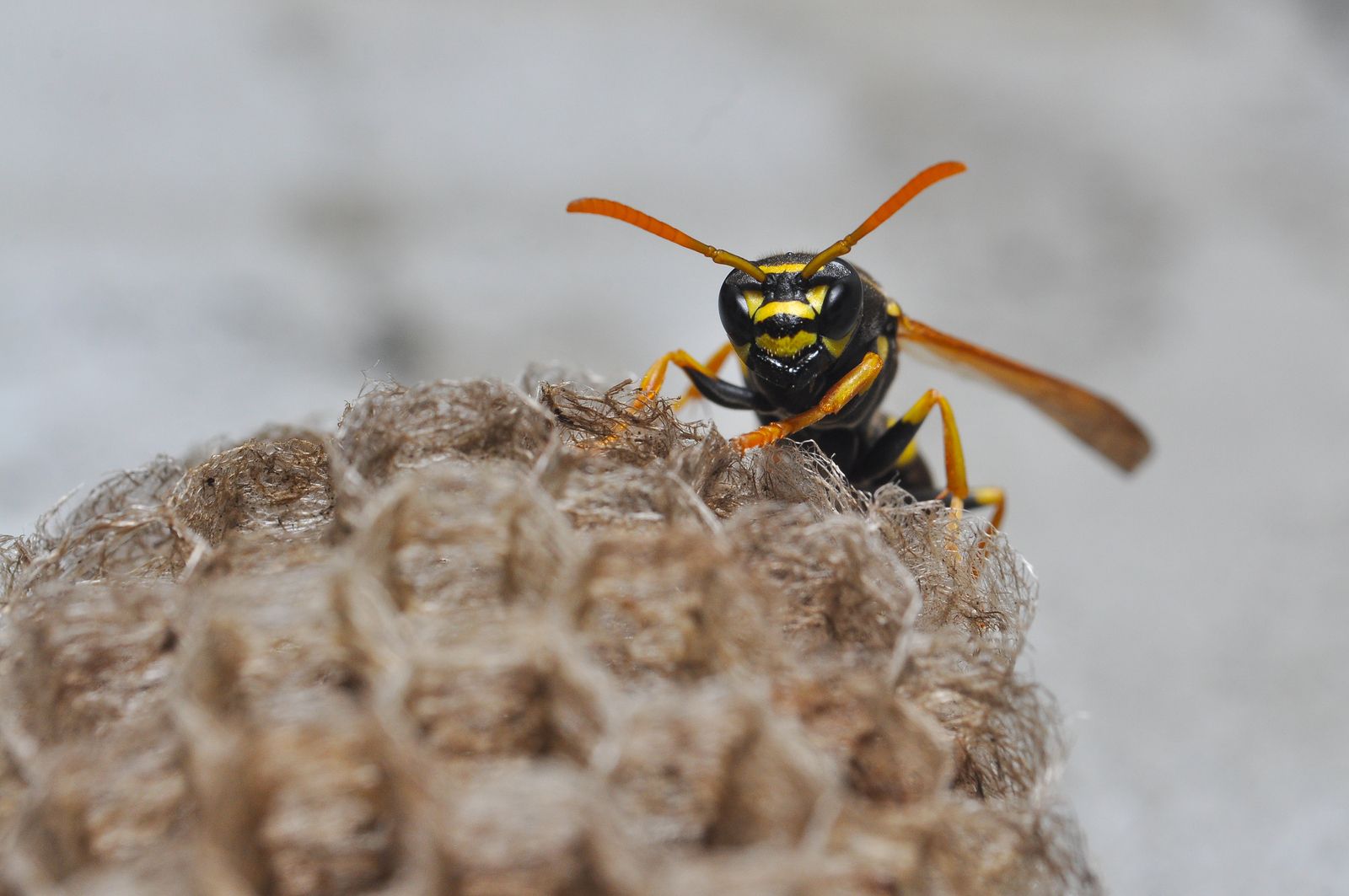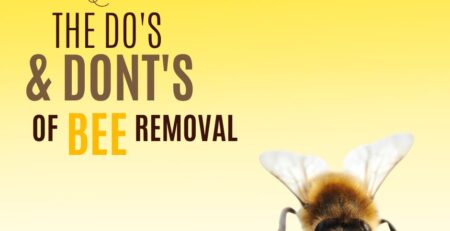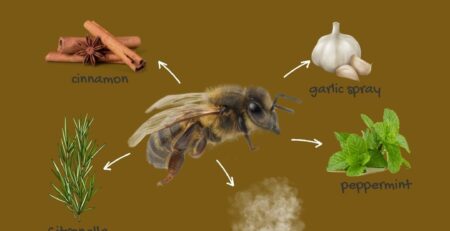Bee and Wasp Removal 101: Spot the Difference between Those Stinging Insects

There’s a lot of buzzing around your house lately, but you can’t tell if those are wasps or bees. It’s easy to confuse these insects for one another— they both sting, they attack when provoked, and they’re unwelcome, dangerous pests that require immediate bee and wasp removal.
Knowing the differences between these two is important to determine the right treatment for wounds, minimize damage, and determine the next steps for pest control.
Appearance
Carpenter bees, bumblebees, and honey bees have a fat, wide middle that connects the thorax to the abdomen. In contrast, wasps have a narrow waist, while their abdomen and thorax are well defined. This design makes wasps quicker and more aerodynamic than bees.
In addition, bees have hairy skin, but wasps are shiny and smooth. Most bees have fuzzy, yellow/black color combinations. Color may vary among wasps. For instance, yellow jackets have black stripes, and paper wasps are more reddish brown.
Sting
Did that “bee” sting you a few times? Then it’s actually a wasp. Bees can only sting once, and they die after. It’s because their stinger is a vital part of their abdomen and leaving behind the attached venom sac is fatal.
On the other hand, wasps can jab and withdraw their stingers safely which allows them to attack multiple times. For both wasps and bees, only the female member of the species are capable of stinging.
Venom
With that one sting, bees can deliver around 50 micrograms of venom. Wasps only deliver up to 15 micrograms per sting. Yet wasp venom attracts other wasps to join the attack by emitting a special pheromone. If you’re not sure which pest you’re dealing with, call Orange County bee removal experts ASAP to avoid these painful stings and prevent more attacks.
Nests/Hives
The physical appearance and location of the hive is a useful way to determine whether you have wasps or bees in your property.
Bees
- Will build a colony over a span of years
- A single colony can contain as many as 50,000 bees
- Nests are made of combs of beeswax and typically have only one entrance
- Usually builds nests in rock formations, walls, attics, and hollow trees
- When bees swarm off to a new site, the wax comb and honey they leave behind can damage siding, drywall, and insulation
Wasps
- Only uses their nest from spring to fall
- Chews wood to a pulp and uses this papery substance to build the hive
- Nests are often umbrella-shaped or oval, with the opening located at the bottom
- Sizes vary depending on the type of wasp (e.g., yellow jacket nests can contain up to 1,000 wasps, while paper wasp hives can house up to 75)
- Wasp build hives in cavities, elevated corners, or the ground
Bees and Wasps are Both Dangerous
Ultimately, it doesn’t matter if you have bees or wasps on your property— you don’t want them there. However, you don’t want to remove them by yourself either. Their hives need to be removed, destroyed, and disposed of correctly to avoid future infestations; this is a dangerous task for amateurs.
Bees or wasp? Whatever it is, let The Bee Man take care of the problem for you! Call us today to request a quote or schedulea service with the top bee and wasp exterminators in Los Angeles, Orange County, and all of Southern California.











